There are actually a couple of ways to work satin stitch. One involves outlining your shape with split stitch and we haven’t done that one yet. So, this week I’ll show you an easier way to do this stitch and next week I’ll do split stitch and explain the difference.
To do it this way you’ll need a clearly-defined shape drawn onto your fabric. I’m using a square but it can be any shape you like.
Bring your needle to the front at a corner of your shape.
Take your needle down at the opposite corner, then up again right next to where your needle first emerged.
Pull the thread through making sure your floss lays flat.
Placing your stitches close together, continue along until your shape is filled. Follow the exact guidelines you’ve drawn for a smooth, even edge. This is actually pretty hard to achieve so I'm looking forward to trying the outlining technique.
When you’re finished filling the shape, hide your ending thread behind the shape by weaving it in under the threads on the back. You'll notice that the back looks very much like the front.
Essentially you’re doing the same stitch we learned last week except that you’re packing them closely together to make a smooth surface.
With the split stitch technique you’ll first outline your shape then work over that outline. Another technique is called padded satin stitch. For this you make a series of small stitches in the center of your shape, then work the satin stitch over the top. This raises the surface of your shape slightly. You’ll see this technique used a lot in whitework.
Here are a few examples of satin stitch. It’s great for flower petals and leaves.
And for animal eyes and noses.





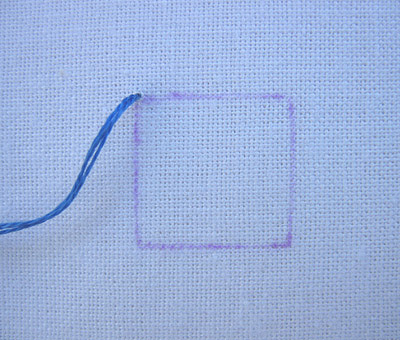
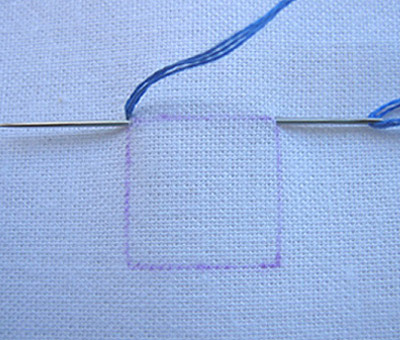
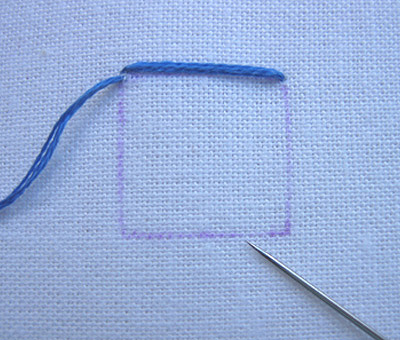
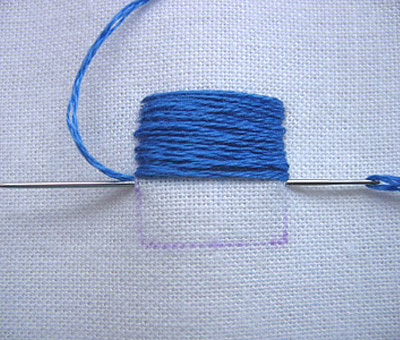
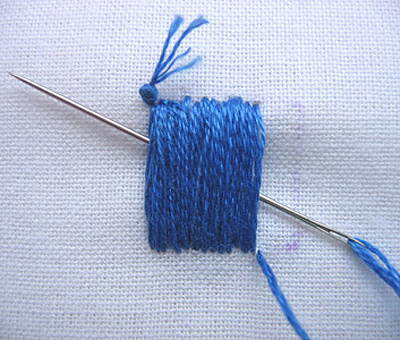
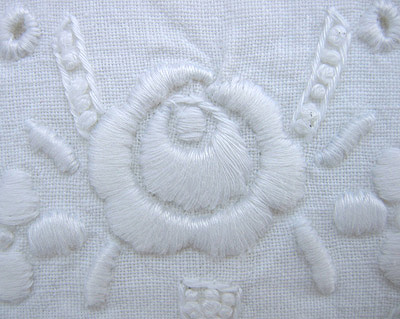
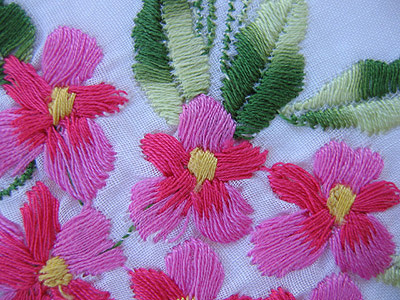
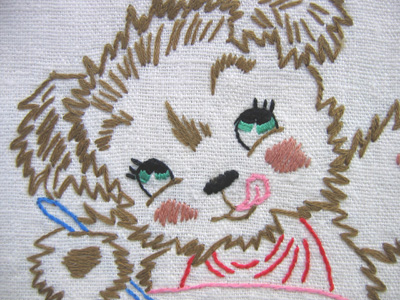


6 comments:
Could you iron on interfacing in the 'shape' you want to cover with satin stitch to give it stability and slightly raised look?
Yes! What you're talking about is called padded satin stitch. Traditionally you would first outline your shape, then fill it with small straight stitches (like stem, running, or chain), then do the satin stitch over the top of everything. But you can also use fabric or felt (attached with tiny stitches) or iron-on interfacing and embroider the satin stitch over the top of that.
I am trying to learn to do a satin stitch in a perfect circle as for doll eyes. Can you help? Never turns out round.
What you want to do is sort of what I described in the previous comment. Draw a perfect circle on your fabric, stitch along the line you've drawn with outline stitch, then do your satin stitches over the top, taking the thread to the outer edge and covering it completely. This is usually what I do when I'm embroidering animal eyes—it should work for doll eyes, too.
Hi! So glad I stumbled onto your blog, it has helped me a lot with my embroidery project, not to mention giving me some future inspiration! I'm looking at the comment posted on February 3rd regarding a satin stitch in a perfect circle as for doll eyes. The answer helped me with my bird eyes...THANKS! But what would be the procedure for doing a larger (1 1/4 inch) circle that you want completely filled in...like for a full moon?
I wouldn't suggest using satin stitch for a circle that wide because the center stitches are just too long. Can you do a combination applique/embroidery instead? Or, it might be cool to use something like a chain stitch, starting in the center and going round and round until you reach the edge. It wouldn't be smooth like satin stitch but the texture might be interesting.
Post a Comment